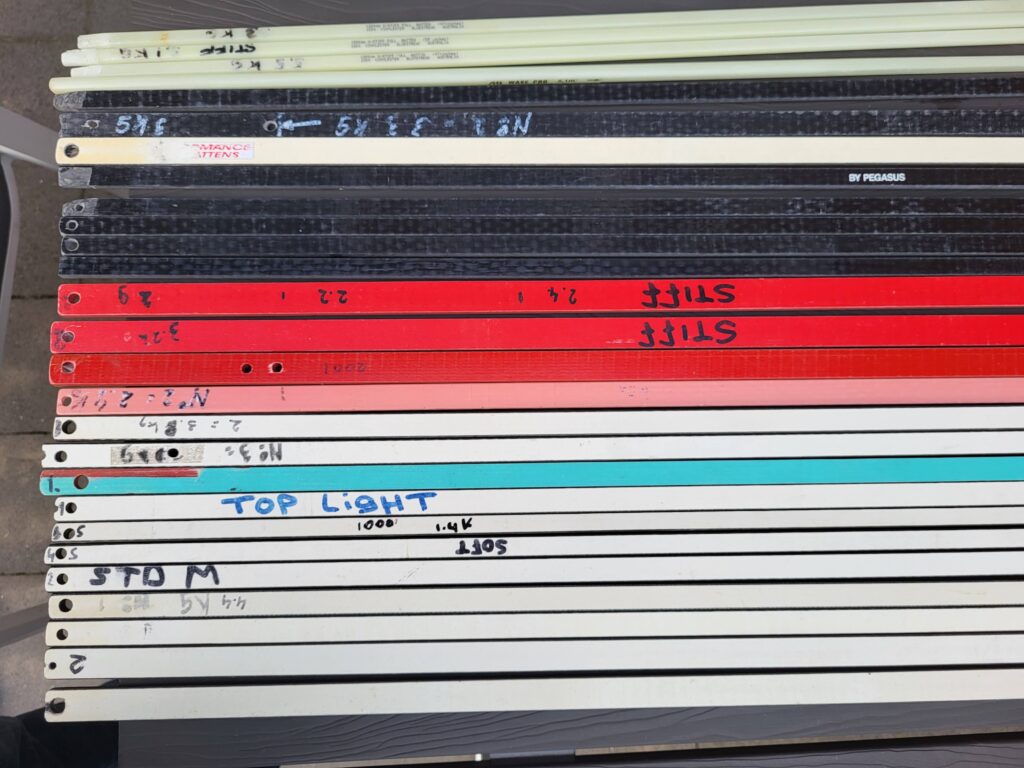The A-class catamaran is equipped with a high performance mast, which is part of the active sail area. For that reason, it is often referred to as ‘wing mast’ or just wingmast. It gives better boat speed, better pointing ability and more sophisticated sail control when compared to a traditional mast.
Spreader rake
This tunes the fore-aft stiffness of the mast below the hounds. The ideal amount of spreader rake is dependent on crew weight, the stiffness of the mast, and to less extent, the amount of luff curve cut into the sail. Stiff masts require more rake to make the mast bend sufficiently, soft masts require less rake.
The spreader rake is measured by placing a straight edge or string line between the diamond wires at the spreaders and measure the distance to the back of the mast. On Saarberg and Australian masts, about 40-60 mm (around 2 inch) of spreader rake is used. Reduce rake if more power required, increase rake if less power required.
If you have excellent height but lack boat speed upwind and the boat does not want to accelerate in wind gusts, then you need more rake. This helps the mast bend fore and aft, which allows the sail to flatten and the leech to open in wind gusts. If you are lacking height and ‘grunt’ in light weather, then you have too much spreader rake.
Diamond tension
This controls the side bends of your mast. Loose diamonds allow the middle of the mast to bend to leeward and the top of the mast to hook up windward. This tends to cause the boat to heel very easily in wind gusts. Very tight diamonds to the opposite. Downwind, tight diamonds keep the mast bent reducing camber and power. Typically, the tension is set at 30 to 34 on the Loos gauge. Heavy crew would go for a rig at the looser end of the scale, light crew would go for the tighter to reduce power.
It is recommended to sail for half a season before attempting to adjust the diamond tension as many apparent diamond tune problems are skipper inexperience problems.
Mast pre-bend
This is the result of the spreader rake, diamond tension and mast stiffness. In effect, the prebend is varied with changing rake and diamond tension as explained above.
Joyrider TV has a nice video showing how to change the prebend of your mast:
Battens
The battens should be shaped to match the general curvature of the sail. Fibrefoam battens are recommended. These are made of a fibreglass-foam sandwich that is light, strong and have excellent bend characteristics. All battens need to be looked after and stored so that they do not become permanently bent or twisted.
Battens should be tied firmly into the sail to remove creases along the batten pocket when sailing. Battens 2 and 3 (counting from the top) need a lot of tension.
Batten stiffness can effect the camber and twist characteristics of the sail. They are an important aid for tuning your sail and rig. Stiff battens hold the sail flat and help the sail to twist more easily. Soft battens allow the sail to develop more camber and reduces leach twist.

